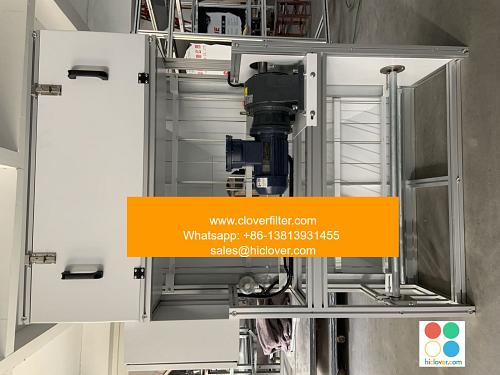The Benefits of Air Filter Components for Cleanrooms

Cleanrooms are controlled environments that require precise temperature, humidity, and air quality conditions to maintain the integrity of the products being manufactured or researched. One of the crucial components of a cleanroom is the air filtration system, which plays a vital role in removing airborne contaminants and maintaining a particle-free environment. In this article, we will explore the benefits of air filter components for cleanrooms, highlighting various application areas and emphasizing the importance of HEPA filter technology, ULPA filter systems, and air purification solutions.
Introduction to Cleanroom Air Filtration
Cleanroom air filtration is a critical process that involves removing airborne particles, such as dust, bacteria, and other contaminants, to prevent contamination and ensure the quality of products. The use of high-efficiency particulate air (HEPA) filters and ultra-low penetration air (ULPA) filters is essential in cleanrooms, as they can capture particles as small as 0.3 microns and 0.1 microns, respectively. These filters are designed to provide optimal air quality and minimize the risk of contamination.
Benefits of Air Filter Components for Cleanrooms
The benefits of air filter components for cleanrooms are numerous and can be summarized as follows:
* Improved air quality: Air filter components, such as HEPA and ULPA filters, can remove up to 99.99% of airborne particles, ensuring a clean and particle-free environment.
* Reduced contamination risk: By removing airborne contaminants, air filter components can minimize the risk of contamination and ensure the integrity of products.
* Increased productivity: Cleanrooms with effective air filtration systems can operate at optimal levels, reducing downtime and increasing productivity.
* Compliance with regulations: Air filter components can help cleanrooms meet regulatory requirements, such as those set by the International Organization for Standardization (ISO) and the Food and Drug Administration (FDA).
Application Areas of Air Filter Components
Air filter components have a wide range of applications in various industries, including:
* Pharmaceutical manufacturing: Cleanrooms are used to manufacture pharmaceutical products, and air filter components play a critical role in ensuring the quality and purity of these products.
* Microelectronics manufacturing: The production of microelectronic components requires a clean and particle-free environment, making air filter components essential.
* Biotechnology research: Cleanrooms are used in biotechnology research to study and develop new products, and air filter components help maintain a contamination-free environment.
* Medical device manufacturing: Air filter components are used in the production of medical devices, such as surgical instruments and implants, to ensure their quality and safety.
Conclusion
In conclusion, air filter components are a crucial part of cleanroom technology, providing numerous benefits, including improved air quality, reduced contamination risk, increased productivity, and compliance with regulations. The use of HEPA filter technology, ULPA filter systems, and air purification solutions is essential in various application areas, including pharmaceutical manufacturing, microelectronics manufacturing, biotechnology research, and medical device manufacturing. By understanding the importance of air filter components, businesses and organizations can ensure the quality and integrity of their products, while maintaining a safe and healthy environment for their employees. It looks like you didn’t include a prompt. Could you please provide more details or specify what you would like to talk about? I’m here to help with any questions or topics you’d like to discuss.

